Scarab Beetle:
 Scarab Beetle
Scarab Beetle
- There are over 30,000 known species of scarab beetles worldwide.
- Scarab beetles can be found on every continent in the world except for Antarctica.
- Some scarab beetles collect animal dung by rolling it into a ball with their hind legs. These beetles, called Dung Beetles use the dung for food as well as a nest for their larvae.
- One species of scarab beetle was worshipped by the ancient Egyptians. Images of the beetle appear in hieroglyphs and sculpture.
Tarantula:
 Tarantula
Tarantula
- In spite of their size, tarantulas have relatively weak venom
- Tarantulas sense their prey by vibrations in the ground.
- Most tarantulas live in underground burrows, but some live in logs, rocks, trees or even bananas!
- Male tarantulas can live up to 10-12 years. Females can live twice as long!
- Many people keep tarantulas as pets.
- About 900 different species of tarantulas have been identified.
- Tarantulas live in tropical, grassland or desert climates throughout the world.
Wolf Spider:
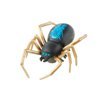 Wolf Spider
Wolf Spider
- Wolf spiders carry their egg sacs with them. When the egg sacs hatch, the young wolf spiders ride around on their mother’s abdomen.
- Wolf spiders get their name from the way that they stalk their prey (like a wolf).
- Some wolf spiders can walk on water thanks to small hairs in their legs that keep them above the water’s surface.
- Wolf spiders can be found just about everywhere in the world except for arctic and Antarctic climates.
- Some wolf spiders live in underground burrows with trap-doors to keep rainwater out.
Black Widow Spider:
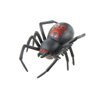 Black Widow Spider
Black Widow Spider
- Male black widows are not venomous, only female black widows carry venom.
- Black widows are cannibalistic, which means they will eat each other if no other food source is around.
- The black widow spins the strongest web silk in the spider kingdom.
- A black widow female can lay up to 3600 eggs per year.
- Black widows are indigenous to North America, but other species of the widow family can be found worldwide
Earwig / Pinscher Bug:
 Earwig / Pinscher Bug
Earwig / Pinscher Bug
- There are 1800 recorded species of earwigs. They can be found on every continent in the world except for Antarctica.
- Earwigs got their name because of a myth that they will crawl into your ear and lay eggs in your brain if you are sleeping on the ground.
- Earwigs are not poisonous, though they can deliver a painful pinch.
- Paleontologists have discovered earwig fossils dating back over 200 million years old!
- Earwigs are maternal. They watch over their eggs and young.
Horned Beetle / Rhino Beetle:
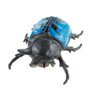 Horned Beetle / Rhino Beetle
Horned Beetle / Rhino Beetle
- The term “Rhino Beetle” refers to 300 different species of beetles!
- The rhino beetle is the strongest animal in the world. It can lift up to 850 times its own weight!
- Rhino beetles look ferocious with their large horn, but they are actually harmless. They do not have any teeth, stingers or venom.
- Some species of rhino beetles are sold as pets in Japan.
- Most rhino beetles live in South and Central America with a few species living as far north as the southern United States.
Bumblebee:
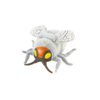 Bumblebee
Bumblebee
- There are 250 known species of bumblebees. They can be found throughout the northern hemisphere.
- Most bumblebees are assumed to be yellow and black, but some bumblebees are red, orange, white, pink or entirely black.
- Bumblebees can regulate their body temperature, which allows them to live in cold climates.
- Bumblebees live in underground burrows, only laying 8-12 eggs at a time.
- Male bumblebees have no stingers, but the females do!
- An angry bumblebee will chase her victim over long distances and sting multiple times!
Cockroach:
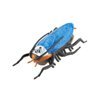 Cockroach
Cockroach
- A cockroach can hold its breath up to 40 minutes.
- There are over 4,000 different species of cockroach, of these only 20 are considered to be pests.
- Cockroaches sometimes carry their eggs around with them.
- Cockroaches can find food by following the scent trail of other cockroaches.
- Cockroaches can live up to four years in captivity.
- A cockroach’s favourite food is the glue on envelopes and book bindings.
- The world’s largest species of cockroach is in South America. It can grow up to 6 inches long with a 1 foot wingspan!
Ladybug:
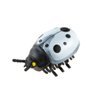 Ladybug
Ladybug
- Ladybugs are used by farmers and gardeners to keep pests off their crops.
- Some people actually raise ladybugs to sell for pest control.
- There are over 300 different species of ladybugs worldwide.
- Ladybugs are actually beetles.
- A typical ladybug can lay up to 1000 eggs in her lifetime.
Wasp:
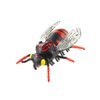 Wasp
Wasp
- Wasps use paralyzed insects and spiders as food for their young, but wasps themselves feed on nectar.
- Tarantula wasps actually paralyze tarantulas and lay eggs on their immobile bodies.
- Wasps do not make honey like bees.
- Some wasps make their nests from saliva and chewed plant matter, paper or mud.

































